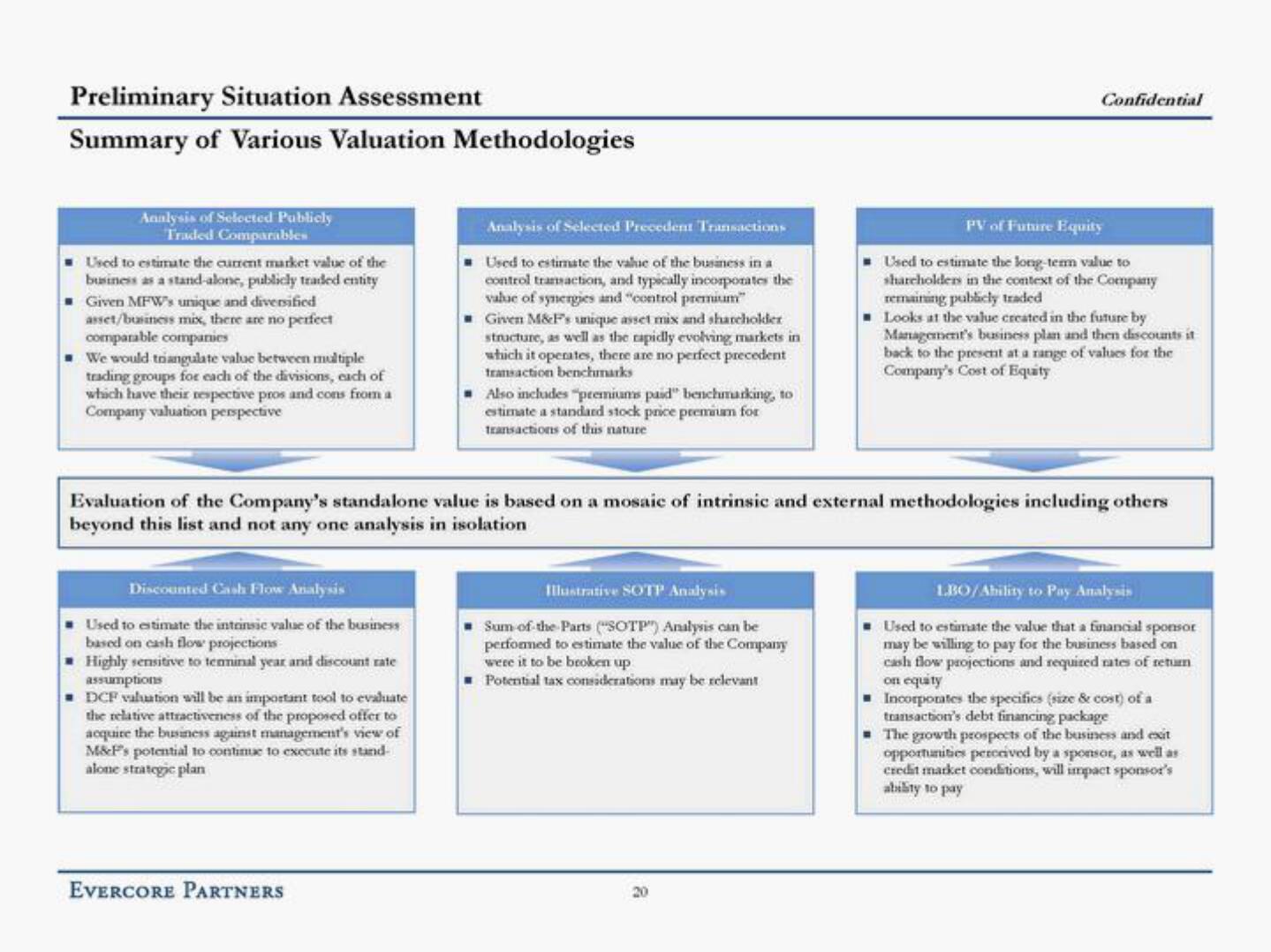Evercore Investment Banking Pitch Book
Preliminary Situation Assessment
Summary of Various Valuation Methodologies
Analysis of Selected Publicly
Traded Comparables
Used to estimate the current market value of the
business as a stand-alone, publicly traded entity
Given MFW's unique and diversified
asset/business mix, there are no perfect
comparable companies
We would triangulate value between multiple
trading groups for each of the divisions, each of
which have their respective pros and cons from a
Company valuation perspective
Discounted Cash Flow Analysis
Used to estimate the intrinsic value of the business
based on cash flow projections
Highly sensitive to terminal year and discount rate
assumptions
DCF valuation will be an important tool to evaluate
the relative attractiveness of the proposed offer to
acquire the business against management's view of
M&F's potential to continue to execute its stand-
alone strategic plan
Analysis of Selected Precedent Transactions
Used to estimate the value of the business in a
control transaction, and typically incorporates the
value of synergies and "control premium"
Given M&F's unique asset mix and shareholder
structure, as well as the rapidly evolving markets in
which it operates, there are no perfect precedent
transaction benchmarks
EVERCORE PARTNERS
Also includes "premiums paid" benchmarking, to
estimate a standard stock price premium for
transactions of this nature
Evaluation of the Company's standalone value is based on a mosaic of intrinsic and external methodologies including others
beyond this list and not any one analysis in isolation
Illustrative SOTP Analysis
Sum of the Parts ("SOTP") Analysis can be
performed to estimate the value of the Company
were it to be broken up
Potential tax considerations may be relevant
Confidential
20
PV of Future Equity
Used to estimate the long-term value to
shareholders in the context of the Company
remaining publicly traded
Looks at the value created in the future by
Management's business plan and then discounts it
back to the present at a range of values for the
Company's Cost of Equity
LBO/Ability to Pay Analysis
Used to estimate the value that a financial sponsor
may be willing to pay for the business based on
cash flow projections and required rates of return
on equity
Incorporates the specifics (size & cost) of a
transaction's debt financing package
The growth prospects of the business and exit
opportunities perceived by a sponsor, as well as
credit market conditions, will impact sponsor's
ability to payView entire presentation